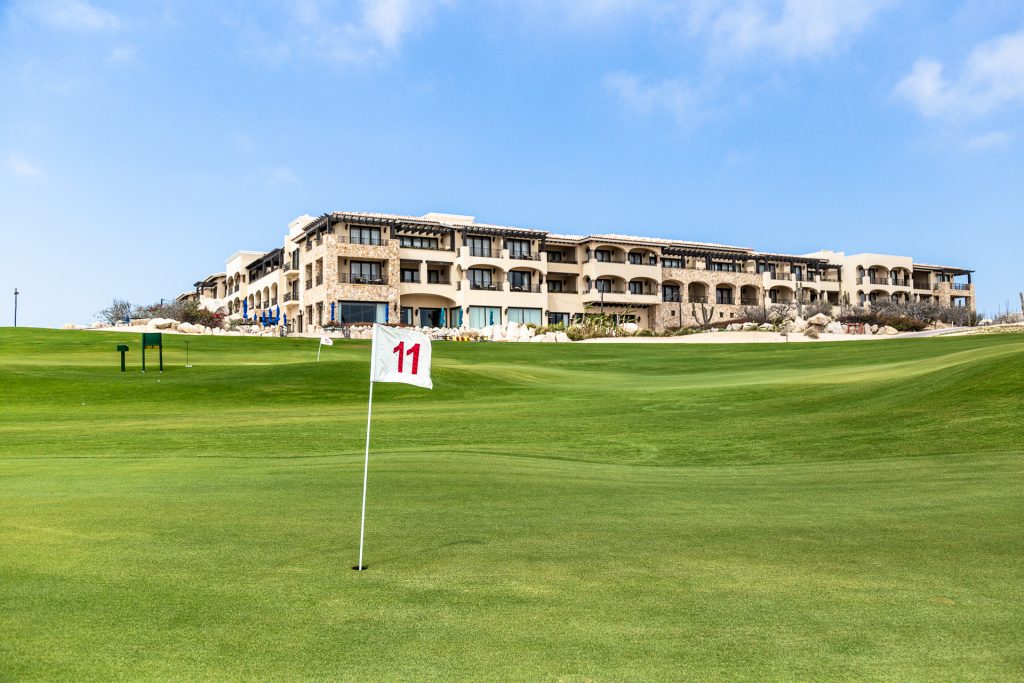Diamante Putting Course Q & A with Architect Paul Cowley

Architect Paul Cowley has enjoyed more than 25 years in the business of creating new golf courses. As a designer, planner, manager and builder, he has been indelibly linked to all of the golf courses at Diamante, working in collaboration with Davis Love III/Love Golf Design and TGR Design by Tiger Woods. Cowley’s newest creation is a solo effort, the Putting Course at Diamante. We talked to Cowley to get his take on the new layout. Question: You’ve participated in the design of some of the world’s top golf courses. What inspired you to take on designing a putting course? Cowley: As a golf designer, I find all aspects of course design to be challenging and interesting. The Putting Course site at Diamante occupies one of the most spectacular settings on the Dunes course, being situated alongside the tee complex at Hole Number 1 and below the clubhouse and restaurant. The Putting Course has a commanding view of the ocean and the most dominant dune on the course. This setting, combined with three acres of potential grassed area, ensured there was enough room to do something special with the design. Question: You were involved in designing the Dunes Course at Diamante. Why did you return to Diamante for this project? What did you like about the property? Cowley: I returned to help project manage the construction of the second course at Diamante, Tiger Woods’ El Cardonal, and also to make some changes to our Dunes course. The setting at Diamante is incomparable. It’s always great to come back. Question: What are the challenges in designing a putting course? How would you characterize your design approach? Cowley: The challenges in designing a putting course are virtually the same as designing a full-size golf course. The task is to provide a challenging and fun experience that players want to enjoy again and again. The best courses are on the edge of being too hard, never too easy, and always make you think. The challenge is designing in that middle ground. Question: What can golfers expect from this putting course? Cowley: It will be fun and challenging for all levels and a learning tool for all the different aspects of the putting game. It’s not a flat practice green and it will make you think. Question: Do you have a favorite design in your portfolio? Cowley: No–I have four—because they are all different for various reasons. The Dunes course here, the Patriot course at Grand Harbor and the Love course at Barefoot Resort in South Carolina and Orchard Creek in New York. Question: What can golfers expect from this putting course? Cowley: It will be fun and challenging for all levels and a learning tool for all the different aspects of the putting game. It’s not a flat practice green and it will make you think. Question: Do you have a favorite design in your portfolio? Cowley: No–I have four—because they are all different for various reasons. The Dunes course here, the Patriot course at Grand Harbor and the Love course at Barefoot Resort in South Carolina and Orchard Creek in New York. Question: Which other golf course architects do you admire? Cowley: Old Tom Morris, Donald Ross, Alister MacKenzie, Pete Dye, C.B. Macdonald, Tom Doak, Bill Coore and Ben Crenshaw Question: Summing up, what makes the new Putting Course at Diamante distinctive? Cowley: Two of the most well-known putting courses in the world are The Himalayas at St. Andrews in Scotland and The Punchbowl at Bandon Dunes in Oregon. Both of these courses are similar in that they are under three acres of grass, all of which is cut at green height and they are comprised of 18 holes that are played sequentially to create a course. These courses change when they move the pin locations weekly. Our putting course is also just under three acres of grass, but it is very different in that half of the area is cut at green height to create a continuous loop wherein 15 holes are laid out to create a course. The course consists of three par-2s and 12 par-3s that vary in length from 12 yards (36 feet) to 64 yards (192 feet) and plays to a par of 42. The play direction of the 15 holes is designed to be alternately played in reverse, so that a hole that played uphill then becomes a downhill hole the next time around. These two 15-hole courses are named the East course and the West course, reflecting their direction of play at the first hole. Another difference with this putting course is that it will have scorecards that include a handicap rating for each hole based on difficulty. Similar to a regulation golf course, this makes it possible for players of different skill levels to compete with each other. Personally, I don’t know of another putting course that is similar to this one. In any event, I’m fairly certain this course will rank among the Top 5 Putting Courses in the World—maybe even Top 3!

